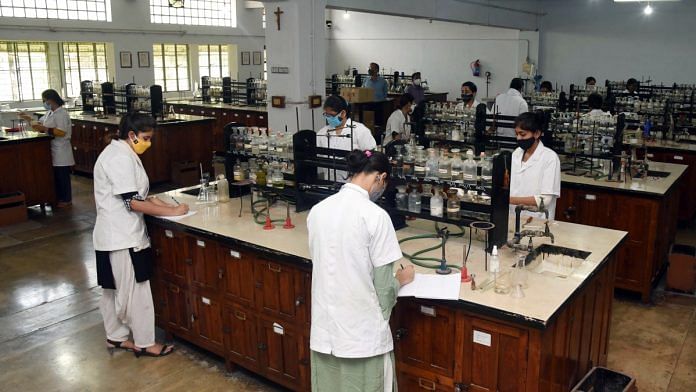Half a century ago, completing class 10 was an achievement, a few years later, an undergraduate degree was considered the mark of success. Later on, a post graduate degree became unavoidable and now, a doctorate is almost a necessity in academia. As years progress, the number of people with each of these qualifications is increasing tremendously. But why stop with specialising in a single field? The University Grants Commission (UGC) guidelines for ‘Pursuing Two Academic Programmes Simultaneously’ notified in April 2022 provides exactly that.
In the past, students who have pursued two simultaneous degrees have had to step into courtrooms when one of these degrees were not considered valid or when the petitioners were deemed ineligible for certain posts in government jobs due to dual degrees. With the new policy in place, cases of these nature will slowly wane over time. The UGC has also been seriously considering the issue since 2012, though it was in talks even in 2004, in light of the changing higher education scenario in India and abroad.
What is in the latest policy?
UGC now permits students to purse two full time academic programmes, except Ph.D programmes, from recognised institutions, with either both the degrees in physical mode, provided the class timings do not overlap, or with one in physical mode and the other in open and online. However, it is to be noted that the guidelines are not retrospective in nature and will come into force in the 2022-23 academic year.
The opportunity to pursue simultaneous dual degree would be welcome to those who desire to expand their knowledge, explore new fields, pursue lifelong learning and are curious to test their limits. It would also enhance employment opportunities and make the pursuers more employable. The time taken to pursue two degrees is also greatly reduced. As a result, a single person might gain expertise in two or more fields, not only professional, but also, vocational, co-curricular and extra-curricular. This will eventually create a new class of educated people in modern India—polymaths.
Polymaths are not new to the Indian society. In fact, some of the famous and accomplished Indians have been polymaths. For instance, Rabindranath Tagore was a poet, painter, philosopher and playwright, and J.C. Bose was a physicist, biologist, botanist and archaeologist. While the opportunity was restricted to people from certain castes and classes then, the current policy will make it accessible to all interested and capable individuals.
Also read: Students can now study engineering and economics together as UGC approves dual degrees
Accessibility to dual degrees
While it is one thing to make something accessible, it is another for people to have the ability to actually access it. Though more people would benefit from this when compared to the past, it will still be out of reach to individuals who struggle to make ends meet, despite them being equally capable and interested. This can be attributed as a part of a larger problem plaguing the country, but there are certain other issues with this policy, which ought to be considered and resolved.
The standard of these courses must be appropriately monitored and regulated by regulatory bodies. If a student is unable to handle the pressure of two simultaneous courses, multiple exit options have to be made available, so that their physical and mental health, along with future prospects are not affected. Another problem with the policy, which has been highlighted in one of the editorials of The Hindu is worth taking into account. The editorial shows that the two degrees in physical mode option is unviable, as individuals might secure seats in “two in-demand courses” which would be deeply unfair, considering that the current national average college density is only 30.1 This could be allayed by increasing the seats in higher educational institutions, which again would demand infrastructure and pose logistical issues.
On the whole, the policy can be ascertained as a much needed change to enhance the output of Indian academia. But, like any other policy or law, this too has its demerits, which have to be addressed. If proceeded sensibly and cautiously, in the next few decades, polymaths in India will no more be an exception but the norm.
The author is a student at Tamil Nadu National Law University, Tiruchirappalli. Views are personal




